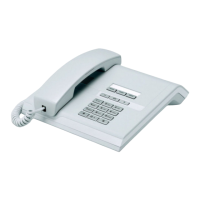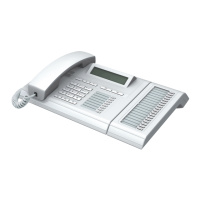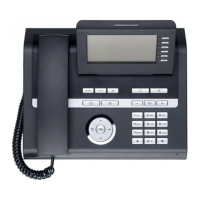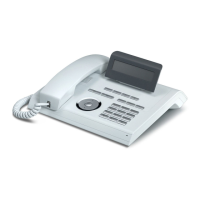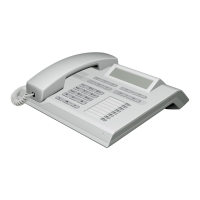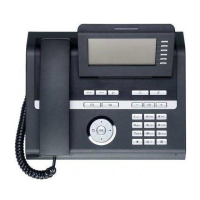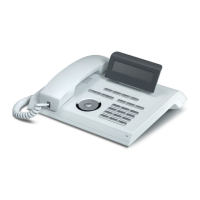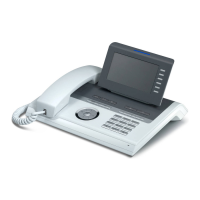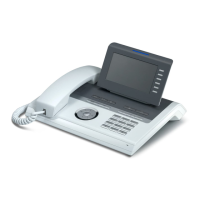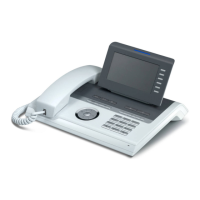administration.fm
A31003-S2030-M100-11-76A9, 01/2015
OpenStage SIP V3R3 for OpenScape Voice, Administration Manual
171
Administration
Multiline Appearance/Keyset
3.11 Multiline Appearance/Keyset
A phone that has more than one line associated to it, and therefore works as a multiline phone,
is referred to as "keyset". The lines are assigned to the phone by setting up a separate line key
for each line.
The multiline appearance feature allows for multiple lines to be assigned to a keyset and for a
line to be assigned to multiple keysets. This feature requires configuration in Phone Adminis-
tration and in the telephone, and is particularly useful for executive-assistant arrangements.
For each keyset, a Primary Line/Main DN is required. The primary line is the dialing number for
that keyset.
There are two types of line:
• Private line: A line with restricted line status signaling towards OSV.
• Shared line: A line that is shared between keysets.
3.11.1 Line key configuration
System > Features > Program keys
A line corresponds to a SIP address of record (AoR), which can have a form similar to an E-
mail address, or can be a phone number. It is defined by the Address parameter. For registra-
tion of the line, a corresponding entry must exist on the SIP server resp. the SIP registrar
server.
A label can be assigned to the line key by setting its Key label.
Every keyset must necessarily have a line key for the primary line. To configure the key of the
primary line, set Primary line to "true".
>
This feature is available only on OpenStage 15, OpenStage 40 and OpenStage 60/
80 phones.
>
In order to configure the phone as a keyset, it is required to
• use an outbound proxy (System > SIP interface > Outbound proxy, see Sec-
tion 3.5.8.1, “Outbound Proxy”), and
• set the server type to "OS Voice" (System > Registration > Server type, see
Section 3.5.7, “SIP Registration”).
>
It is recommended to configure primary lines only on keys 1 to 6, or 1 to 5, if a shift
key is needed. This ensures that the lines are still accessible when the user migrates
to a different phone with fewer keys via the mobility feature.

